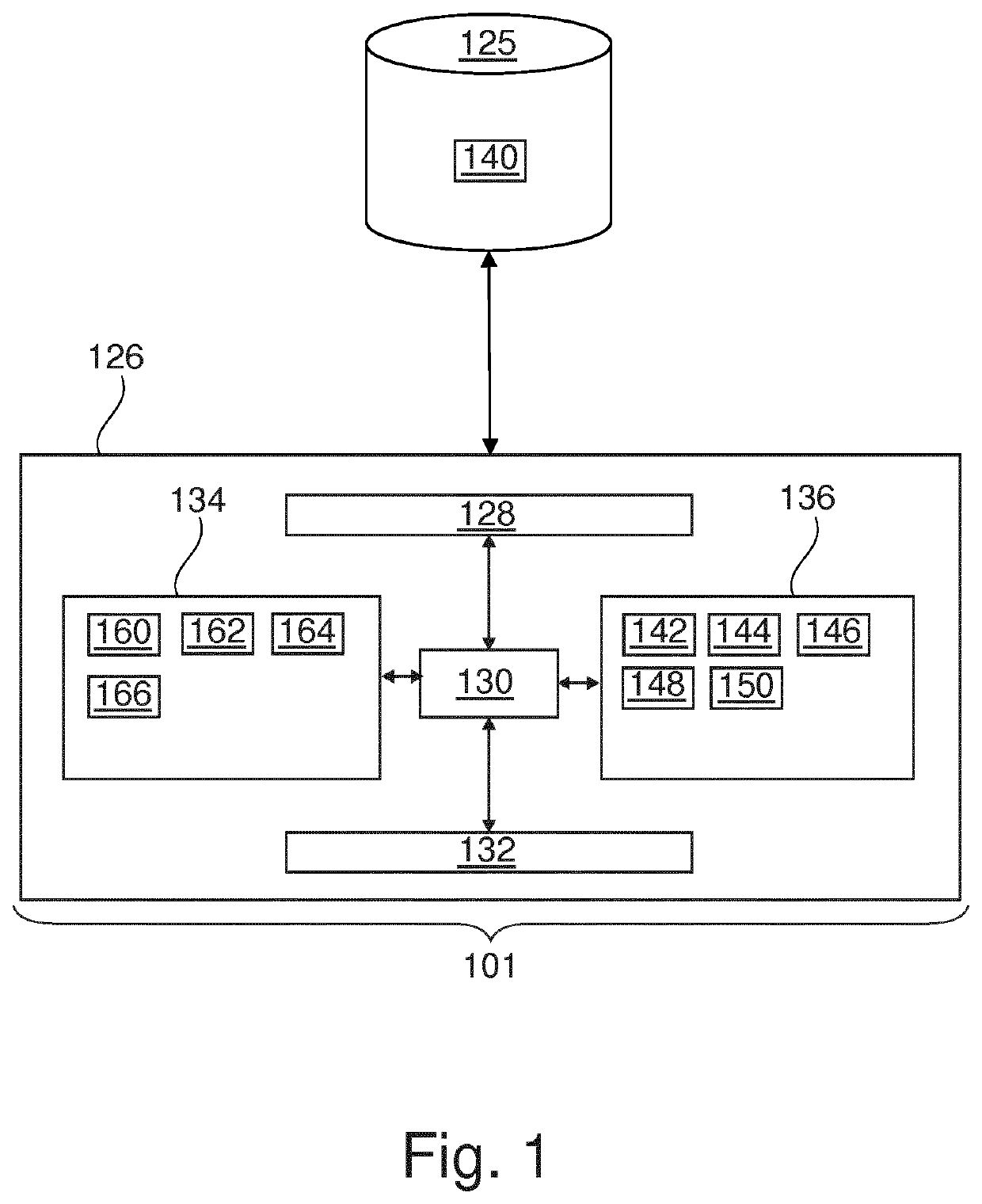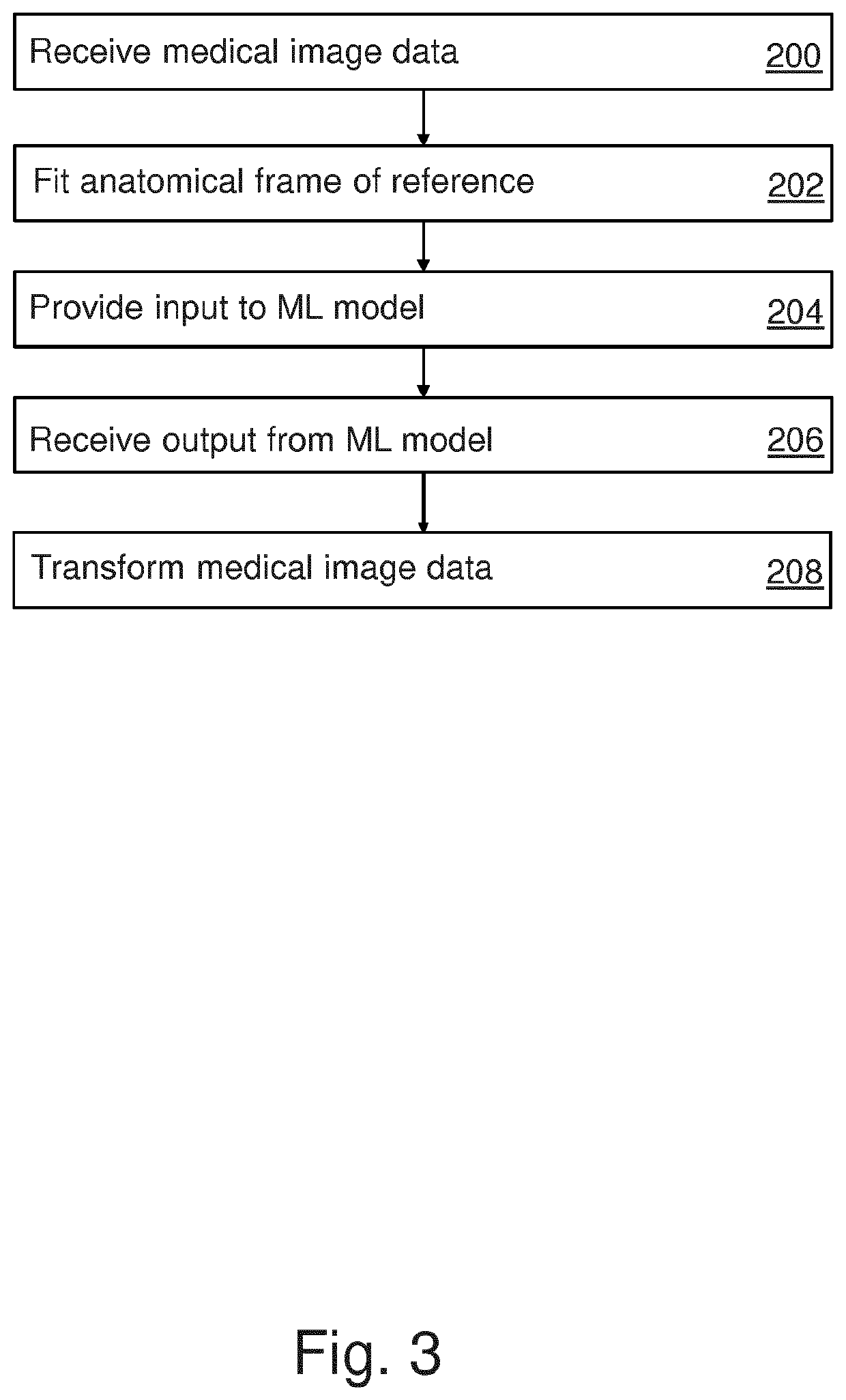Tissue classification using image intensities and anatomical positions
a tissue type and image intensity technology, applied in the field of medical image data processing, can solve the problems of inability to provide the anatomical positions over the complete image volume required for 3d tissue type classification, inability to determine internal structural information of segmented area, etc., and achieve the effect of reducing the development and maintenance effor
- Summary
- Abstract
- Description
- Claims
- Application Information
AI Technical Summary
Benefits of technology
Problems solved by technology
Method used
Image
Examples
Embodiment Construction
[0073]Like numbered elements in these figures are either equivalent elements or perform the same function. Elements which have been discussed previously will not necessarily be discussed in later figures if the function is equivalent.
[0074]FIG. 1 shows an example of a medical image data processing system 101 comprising a computer 126. The computer 126 is shown as containing a processor 130 which is operable for executing machine-readable instructions. The computer 126 is further shown as comprising a user interface 132, computer storage 134 and computer memory 136 which are all accessible and connected to the processor 130. Furthermore, the computer 126 may communicatively be connected with a database 125. The computer 126 may be configured for requesting data, like medical image data 140 from the database 125 via the communication interface 128. According to embodiments, the database 125 may be provided by an external system and accessible for the computer 126 via a communication n...
PUM
 Login to View More
Login to View More Abstract
Description
Claims
Application Information
 Login to View More
Login to View More - R&D
- Intellectual Property
- Life Sciences
- Materials
- Tech Scout
- Unparalleled Data Quality
- Higher Quality Content
- 60% Fewer Hallucinations
Browse by: Latest US Patents, China's latest patents, Technical Efficacy Thesaurus, Application Domain, Technology Topic, Popular Technical Reports.
© 2025 PatSnap. All rights reserved.Legal|Privacy policy|Modern Slavery Act Transparency Statement|Sitemap|About US| Contact US: help@patsnap.com



